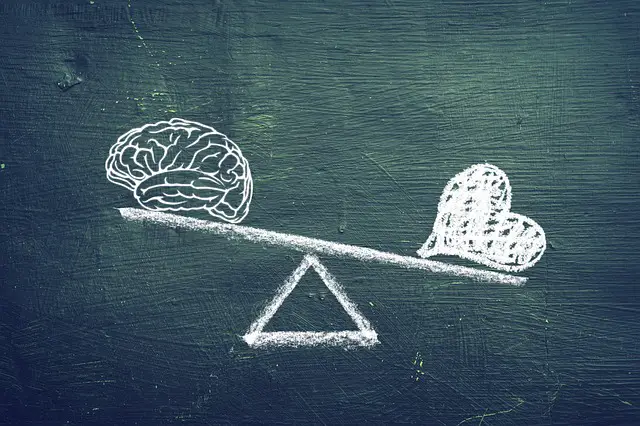Logical thinking relies on formal rules to ensure validity, while rational thinking considers evidence and context for informed decision-making.
TL;DR Logical Thinking Vs. Rational Thinking
Logical thinking helps us to identify fallacies, detect inconsistencies, and make sound judgments based on deductive or inductive reasoning. It provides a framework for evaluating arguments critically and arriving at valid conclusions.
Rational thinking enables us to approach situations with an objective mindset by considering facts, data, and evidence. It aids in making informed choices by assessing risks versus rewards, analyzing cause-effect relationships, and recognizing patterns.
Understanding Logical Thinking

Logical thinking is a cognitive process that involves using reason and sound judgment to make sense of information. It’s about connecting the dots, identifying patterns, and drawing conclusions based on evidence and logical reasoning. At its core, logical thinking relies on clear and consistent principles that guide our thought processes.
When we engage in logical thinking, we strive to eliminate biases or emotions that may cloud our judgment. Instead, we focus on objective facts and evidence to arrive at rational conclusions. This helps us approach problems in a systematic manner, allowing for more effective decision-making.
One key aspect of logical thinking is the ability to recognize cause-and-effect relationships. By understanding how different variables interact with each other, we can identify the underlying reasons behind certain outcomes or events. This analytical approach enables us to solve complex problems by breaking them down into smaller, more manageable components.
Additionally, logical thinking encourages critical questioning and analysis of information presented to us. Rather than accepting things at face value, it prompts us to examine arguments carefully and evaluate their validity based on logic and reasoning. This skepticism fosters a mindset of intellectual curiosity and drives us towards seeking out reliable sources of knowledge.
In essence, understanding logical thinking equips us with the tools needed to navigate through life’s challenges with clarity and precision. It empowers us to make informed decisions based on objective facts rather than succumbing blindly to subjective biases or emotional impulses. So next time you find yourself faced with a problem or dilemma, remember the power of logical thinking – it may just be the key that unlocks your path towards an optimal solution!
Understanding Rational Thinking

Rational thinking is a cognitive process that involves analyzing situations objectively and making decisions based on reason and evidence. It is different from emotional or impulsive thinking, as it relies on logic and critical analysis.
One key aspect of rational thinking is being able to evaluate information critically. Rather than accepting ideas at face value, rational thinkers engage in thoughtful examination and seek evidence to support or refute claims. They weigh the pros and cons before coming to a conclusion.
Another important element of rational thinking is considering cause-and-effect relationships. Rational thinkers understand that actions have consequences, so they carefully assess potential outcomes before making choices. This helps them make informed decisions rather than acting impulsively.
Furthermore, rational thinking requires an open mind. It means being willing to consider alternative perspectives and adjust one’s beliefs based on new information or evidence presented.
Additionally, rational thinkers prioritize logical reasoning over emotions when problem-solving or decision-making. They recognize that emotions can cloud judgment, so they strive for objectivity by relying on facts and data.
Understanding rational thinking allows individuals to approach situations with a level-headed mindset rooted in reason and careful analysis rather than relying solely on emotions or biases. By practicing this type of cognitive process regularly, individuals can enhance their decision-making abilities and make more informed choices in various aspects of life.
Logical Thinking Vs. Rational Thinking – Key differences
| Aspect | Black Locust (Robinia pseudoacacia) | Honey Locust (Gleditsia triacanthos) |
|---|---|---|
| Leaf Type | Pinnately compound leaves with 7-19 leaflets per leaf. | Bipinnately compound leaves with numerous tiny leaflets. |
| Thorns | Typically has thorns, which can be quite sharp, especially on young trees. | Usually thornless, although some cultivars may have small thorns. |
| Flowers | Clusters of fragrant white flowers with a yellow spot on the petals. | Greenish-yellow, fragrant flowers in long, pendulous clusters. |
| Pods or Seed Pods | Dark brown to black, leathery pods with 4-8 seeds. | Long, twisted, brownish-red pods that contain sweet pulp and seeds. |
| Leaflet Arrangement | Alternately arranged leaflets along the compound leaf stalk. | Bipinnately arranged, giving the leaves a more delicate appearance. |
| Growth Rate | Rapid growth, with the ability to become invasive in some regions. | Moderately fast growth rate, but less aggressive than black locust. |
| Bark | Dark and deeply furrowed, with rough, ridged texture. | Light gray to brown, with shallow furrows and prominent, curved ridges. |
| Tolerance to Pollution | Highly tolerant of pollution and often used for urban planting. | Moderately tolerant of pollution but less commonly used in urban areas. |
| Timber and Wood Quality | Known for durable, rot-resistant wood, used in construction and woodworking. | Wood is less durable and not as commonly used for construction. |
| Common Uses | Timber, posts, firewood, and erosion control. | Shade tree, ornamental tree, and occasionally used for timber. |
| Allergenicity | The pollen of black locust may trigger allergies in some individuals. | Honey locust is not typically considered a significant allergen. |
| Geographic Distribution | Native to the southeastern United States but has been widely planted and naturalized. | Native to eastern and central North America. |
Benefits of Using Logical Thinking
- Precision and Clarity: Logical thinking promotes precise and clear reasoning. It helps in structuring arguments, identifying flaws, and ensuring that conclusions are valid and well-founded, leading to effective communication and problem-solving.
- Problem Solving: Logical thinking is essential for effective problem-solving. It enables individuals to break down complex issues into manageable components, analyze them systematically, and arrive at well-reasoned solutions.
- Critical Thinking: Logical thinking fosters critical thinking skills. It encourages individuals to question assumptions, evaluate evidence, and make informed decisions. This skill is valuable in various aspects of life, including academia, professional work, and personal decision-making.
Benefits of Using Rational Thinking
- Informed Decision-Making: Rational thinking allows individuals to make well-informed decisions by considering relevant evidence, evaluating pros and cons, and weighing potential outcomes. It promotes a systematic approach to assessing choices and their consequences.
- Effective Problem-Solving: Rational thinking is a key component of effective problem-solving. It encourages a structured and logical approach to addressing challenges, leading to more practical and well-considered solutions.
- Adaptability: Rational thinking acknowledges the presence of uncertainty and allows individuals to adapt to changing circumstances. It enables flexibility in decision-making, taking into account evolving information and new perspectives, which is crucial in dynamic environments.
Image Credits
Featured Image By – Jörn from Pixabay








